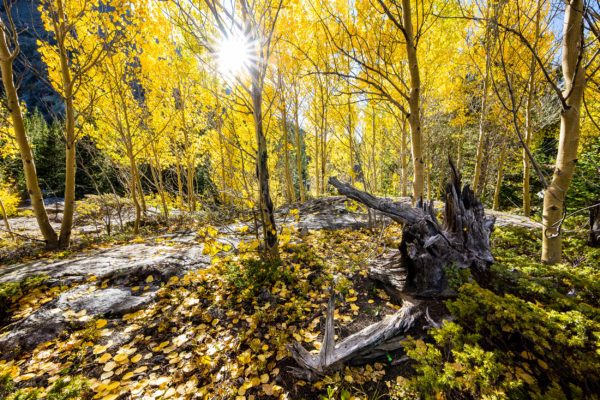Over the last week and half or so the aspens around my hometown of Breckenridge, CO have been morphing from summer’s emerald green to a variety of hues from light to deep yellow, orange, rust and even some red now and again. The fleeting nature of fall makes it one of my favorites times of the year and certainly for nature photographers it can be a wildly productive season.

Fall in the Rockies is full swing with the highest elevations peaking over the next week. But the annual color explosion is far from over so procrastinating photographers fear not! The lower elveations, and for landscape shooters better destiantions, of Crested Butte, Telluride, Durango and the like are still over a week away from peaking. And if you miss fall in the mountains, have no fear, as the color spills down the Colorado plateau and into the nearby deserts. And on the east coast, I hear the fall foliage party is just getting started in the northern and higher altitude zones. Whenever fall color peaks in your neck of the woods, the basics of composition and color remain the same.
To capture fall in its finest I have been using a kit consisting of my Sigma 12-24 f4 A, 24-70, f2.8 A and my 100-400 C and 70-200 f2.8 lenses.. I will also use a polarizing filter on my medium and telephoto lenses. While the 12-24 does not accept a polarizing filter I would probably not use one on it anyway, as they tend not to work well on super wide angle lenses due to the very wide field of view. For added depth of field I tend to shoot between f8 and f16 and to get the best out of my sensor I shoot at low ISO’s rarely going over 400. This means slow shutter speeds will be used and a tripod is a must.
Aspen groves really start to glow when they are backlit so keep an eye out for this lighting situation. This may be a good time to take the polarizer off too as it may help reduce glare and ghosting—try both ways and see. Sidelight of 45 degree light is also great look and is an ideal time to saturate colors and increase contrast with you polarizing filter. Get creative, experiment with foreground and background bokeh, and try some zoom-blur and camera twist techniques while you’re at it!
One of the best aspects of fall shooting is that with the low angle of the sun you can shoot almost all day long. Add to that, cool mornings with smoky rivers, campfire smoke drifting through the air, elk bugling, and if you’re lucky snow capped peaks in the distance, and you have the ingredients for a magical week of exploration and photography. If you’ve never visited the Colorado Rockies at the peak of fall color, hopefully these photos will inspire you to visit yourself!
This is so beautiful and creative. I like all the possibilities explained here.